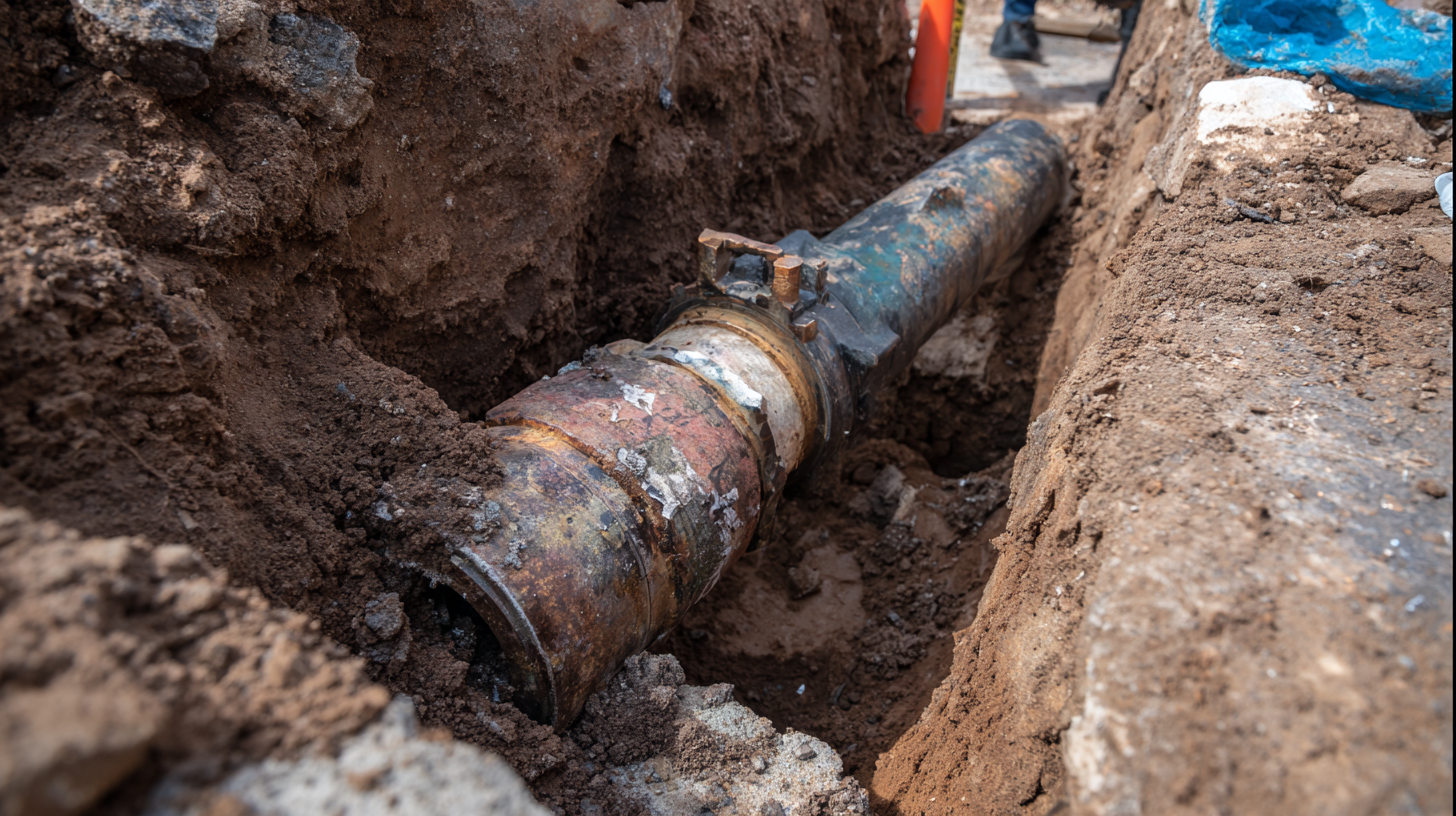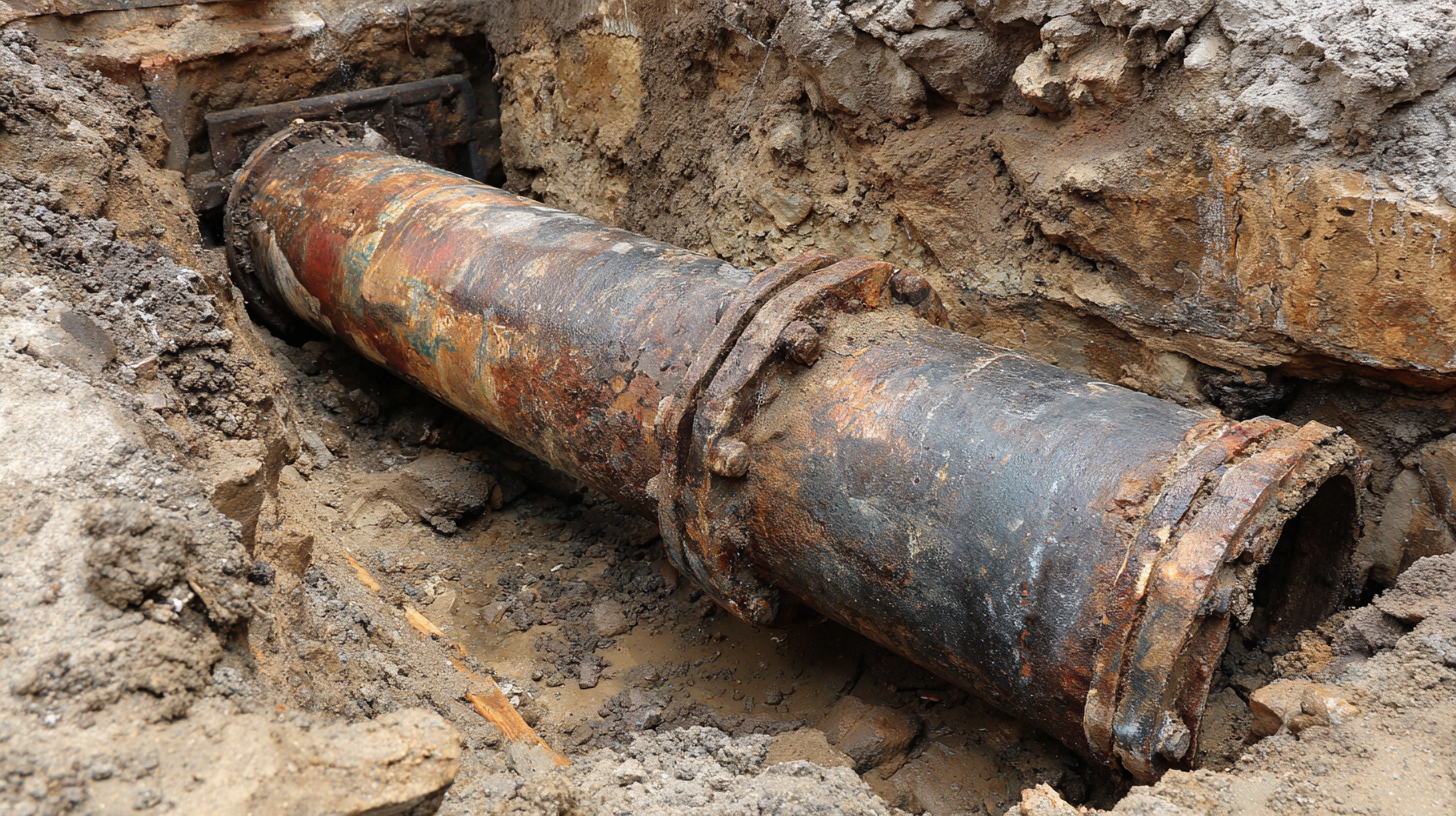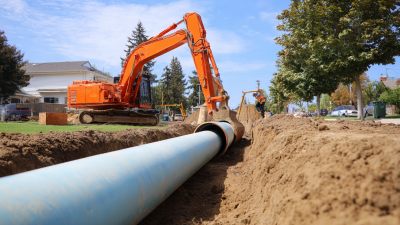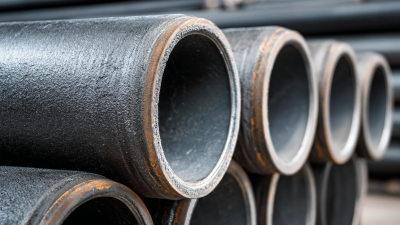Essential Guide to Understanding Main Sewer Line Repair: What Homeowners Need to Know
As homeowners, understanding the intricacies of main sewer line repair is essential to maintaining the health and functionality of your property’s plumbing system. According to the Environmental Protection Agency, nearly 1 in 10 U.S. households experience sewer line issues, resulting in costly repairs averaging between $2,000 and $25,000, depending on the severity of the damage and the method chosen for repair. Additionally, the American Society of Civil Engineers reports that aging infrastructure continues to pose significant risks, with many municipalities grappling with outdated sewer systems that can lead to backups and leaks. Engaging with the necessary knowledge and best practices surrounding main sewer line repair not only prepares homeowners for potential problems but also empowers them to make informed decisions when it comes to preventing and addressing these costly issues.

Essential Tips for Identifying Main Sewer Line Issues at Home
Maintaining a healthy sewer line is crucial for any homeowner. Identifying main sewer line issues early can save you from costly repairs and unpleasant surprises. There are several key indicators that suggest it may be time to inspect your main sewer line. One of the primary signs is slow drains; if multiple fixtures in your home are draining slowly, it could indicate a blockage in the sewer line. Another red flag is the presence of unusual odors in your yard or home, which can be a sign of leaks or backups in the sewer system.
To effectively identify potential sewer line issues, follow these practical tips. First, pay attention to gurgling sounds coming from your drains, as they can signal trapped air caused by a clog. Secondly, regularly check for standing water in your yard, particularly in low areas, as this may indicate a sewage leak. Lastly, be vigilant about the health of your plumbing fixtures; frequent backups in toilets or sinks should prompt immediate investigation. By staying alert to these signs, homeowners can address sewer line problems before they escalate into major issues.
Understanding Main Sewer Line Issues
This bar chart illustrates the common issues faced by homeowners regarding main sewer line problems, displaying the frequency of each issue encountered. Awareness of these issues can help in early detection and prompt maintenance actions.
5 Common Signs Indicating Your Main Sewer Line Needs Repair
Understanding when your main sewer line requires repair is crucial for maintaining the health of your home. Here are five common signs that indicate your main sewer line may need attention. First, frequent clogs in multiple drains can point to a more significant issue, especially if these clogs seem unmanageable. According to the American Society of Home Inspectors, approximately 60% of sewer line problems stem from blockages, which can hinder the entire plumbing system.
Another warning sign is the presence of foul odors. If you notice unpleasant smells coming from your drains or yard, a broken sewer line might be releasing sewage gas, posing health risks and requiring immediate repair. Additionally, if you see pooling water or lush patches of grass in your yard, these can indicate leaks from the sewer line, as they create an environment conducive to unwanted plant growth.
A 2021 study by the National Association of Home Builders revealed that untreated sewer line issues could lead to repair costs upwards of $5,000, underscoring the importance of early detection and response. Keeping an eye out for these signs can help homeowners avoid the extensive damage and costs associated with neglected sewer line repairs.
3 Steps for Homeowners to Conduct Preliminary Sewer Line Inspections
When it comes to maintaining a healthy home, understanding the main sewer line and conducting preliminary inspections is crucial for homeowners. The first step involves identifying any signs of trouble, such as slow drains, foul odors, or unusual gurgling sounds. Homeowners should be vigilant about these indicators, as they can suggest potential blockages or damage in the sewer line. Regularly monitoring these symptoms will empower homeowners to act before minor issues escalate into costly repairs.
The second step is conducting a visual inspection of accessible sewer cleanouts. Homeowners can look for signs of leaks, standing water, or intrusion by tree roots. Utilizing a flashlight, they can illuminate dark areas and better spot any physical irregularities. If they notice anything out of the ordinary, it’s essential to document these findings for professional assessment.
Lastly, homeowners can consider using a camera inspection service to get an in-depth look into the sewer line. This technology provides a clear view of the interior, helping to identify blockages, cracks, or shifts in the pipeline that may not be visible to the naked eye. By taking these preliminary steps, homeowners can be proactive in managing their sewer line health, leading to more informed decisions regarding potential repairs.
7 Essential Tools Every Homeowner Should Have for Sewer Line Maintenance
 Maintaining your home’s sewer line is crucial to preventing costly repairs and health hazards. Homeowners should be equipped with essential tools to address minor issues before they escalate. According to a report by the American Society of Civil Engineers (ASCE), about 250,000 water main breaks occur in the United States annually, leading to increased pressure on sewer systems. This highlights the importance of being proactive in maintenance.
Maintaining your home’s sewer line is crucial to preventing costly repairs and health hazards. Homeowners should be equipped with essential tools to address minor issues before they escalate. According to a report by the American Society of Civil Engineers (ASCE), about 250,000 water main breaks occur in the United States annually, leading to increased pressure on sewer systems. This highlights the importance of being proactive in maintenance.
One indispensable tool for every homeowner is a high-quality drain snake. This device can efficiently clear blockages caused by debris or tree roots, which the ASCE reports are responsible for over 85% of sewer line issues. Additionally, a plumbing auger helps reach deep clogs that may be unreachable by a basic snake. A video inspection camera is also vital; it allows homeowners to visually assess the condition of their sewer lines and identify potential problems long before they necessitate extensive repairs. By investing in these tools, homeowners can better manage their sewer line maintenance, reducing the likelihood of frequent and costly interventions.
4 Professional Repair Options: Choosing the Right Solution for Your Home
When it comes to main sewer line repair, homeowners face important decisions regarding the right solution for their needs. There are four primary professional repair options that should be considered: traditional excavation, trenchless methods, pipe lining, and pipe bursting. Each option brings its own advantages and potential challenges, making it crucial for homeowners to assess their specific situation and preferences.
According to industry reports, trenchless repair methods have gained significant popularity due to their efficiency and minimal disruption to landscaping. For instance, trenchless technology can often reduce repair time by up to 50% compared to traditional excavation, which typically requires extensive digging and restoration. Pipe lining, in particular, has been noted for its ability to extend the lifespan of existing pipes without the need for extensive excavation, making it an environmentally friendly option.
Moreover, homeowners should also consider the long-term cost implications of each option. While initial expenses for trenchless methods may be higher, they can lead to long-term savings due to reduced need for future repairs and landscape restoration costs. Understanding these repair options allows homeowners to make informed decisions that best suit their properties and financial planning.

Related Posts
-

7 Essential Tips for Effective Home Sewer Line Repair You Can't Ignore
-

Creative Applications of Sewer Pipe Sleeve Repair Techniques
-

How to Identify Signs Your Sewer Line Needs Immediate Attention
-

Understanding Sewer Line Relining: A Comprehensive Guide to Modern Pipeline Repair Techniques
-

Unlocking the Benefits of Sleeve Sewer Line Technology for Efficient Waste Management
-

Exploring the Future of Sewer Pipe Sleeve Innovations at the 138th Canton Fair 2025: Industry Trends and Market Growth

